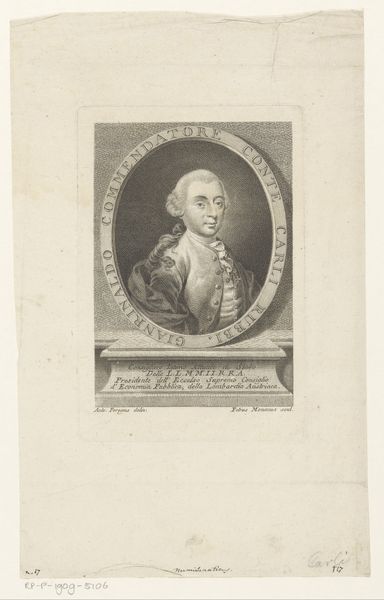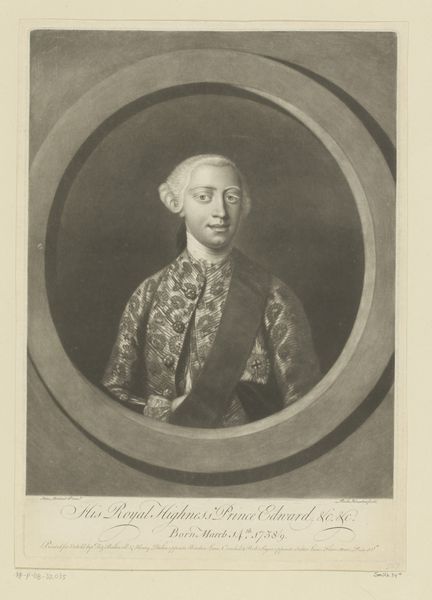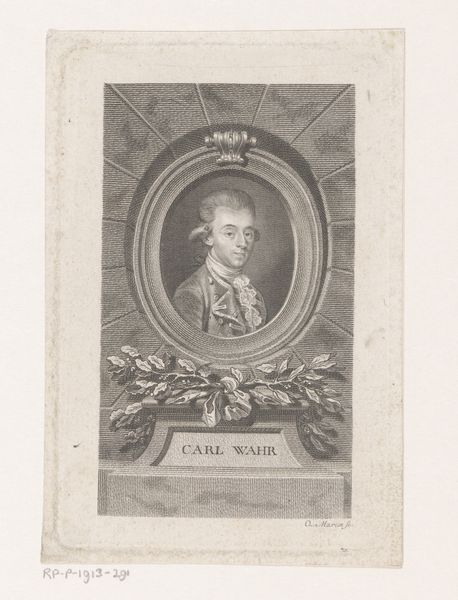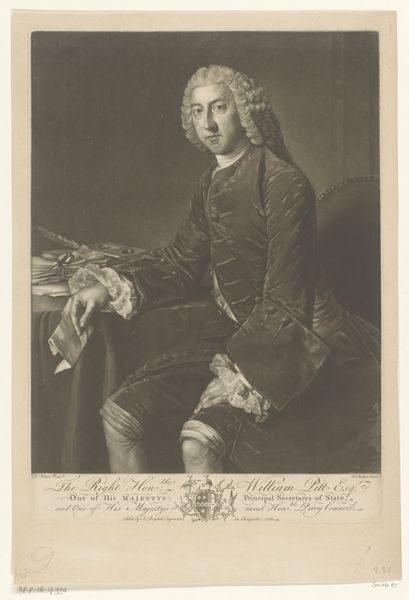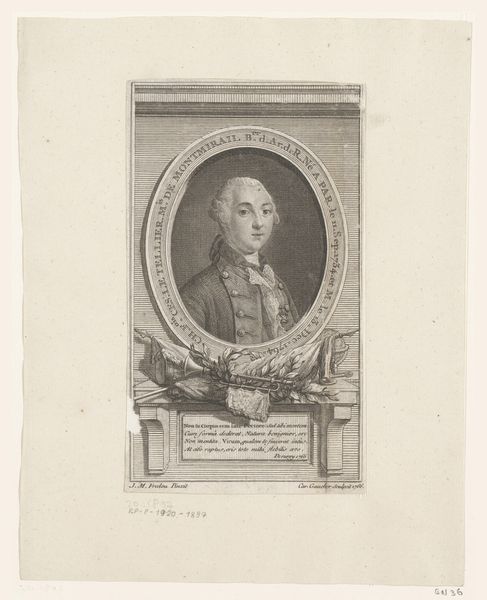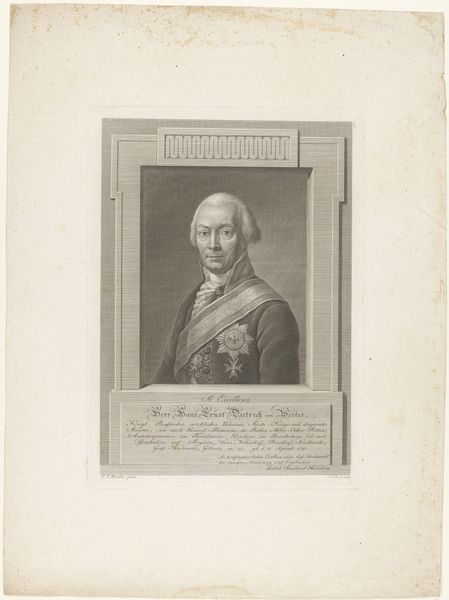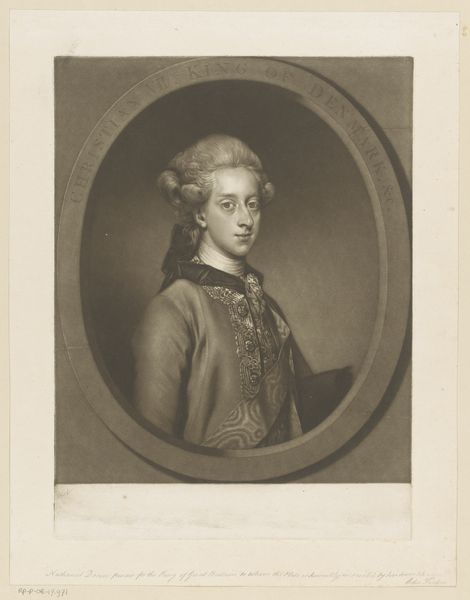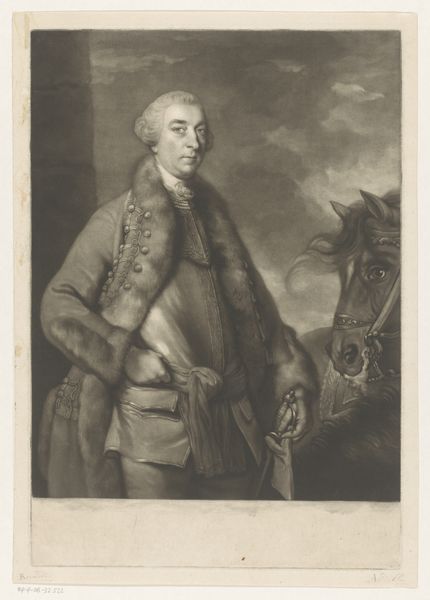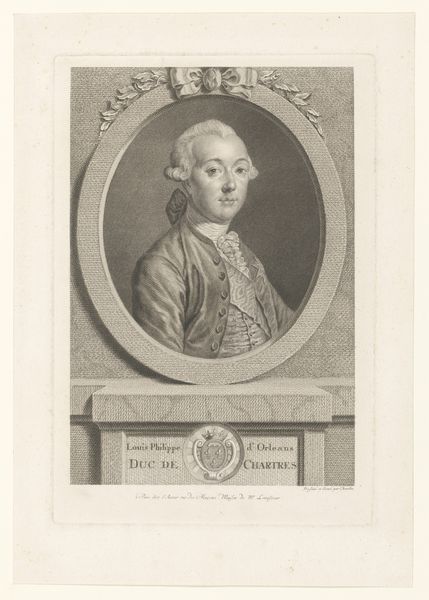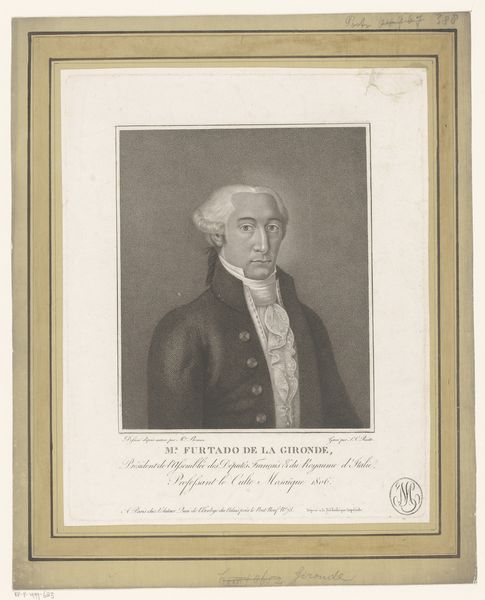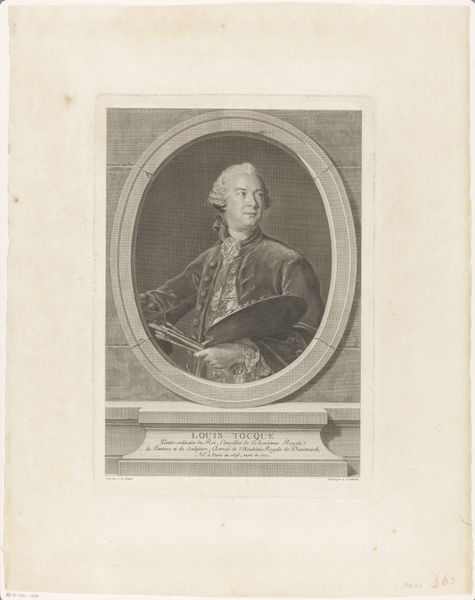
#
photo of handprinted image
#
aged paper
#
light pencil work
#
homemade paper
#
pale palette
#
pastel soft colours
#
photo restoration
#
ink paper printed
#
light coloured
#
white palette
Dimensions: height 380 mm, width 277 mm
Copyright: Rijks Museum: Open Domain
Curator: Here we have John Dixon’s "Portrait of Francis Seymour-Conway," estimated to have been created sometime between 1765 and 1775. The work presents the subject, set within an oval frame, in profile against what appears to be aged paper. Editor: It has this strange faded quality that almost makes it feel like a ghost, doesn’t it? Like a memory trying to surface. The softness of the lines and the pale palette amplify that effect. Curator: It is precisely that sense of layering time I find compelling. Dixon, a master of mezzotint, skillfully worked from dark to light. It’s a printmaking technique involving intricate burnishing and scraping. Editor: Intricate is the word. Thinking about the labour intensiveness of the process—all that scraping and burnishing… it completely transforms the nature of portraiture. What was usually for the wealthy in painting now could be circulated to more of the aspiring classes as a print. The means of production changed who got represented. Curator: And notice the composition – how Dixon captures the almost imperceptible turn of Seymour-Conway’s head. It's not merely a rendering of features, but an invitation into the sitter's presence, even hinting at his psychology. It makes me wonder, what thoughts or musings consumed him in that very moment? The way the eyes seem to both see us and look past us, so enigmatic... Editor: Well, let’s not romanticize the “enigma” of aristocratic portraits. Someone likely labored many hours to produce this image. Consider the paper—it is probably handmade, its fibers bearing traces of their origin. Everything here speaks of the social relations inherent to production and consumption. Curator: And in appreciating those very relations we can acknowledge not just Francis Seymour-Conway's story, but also Dixon’s story, his materials, his labor and their place within their own society... perhaps making them just a little less ghostly. Editor: A more complete, tangible story of how portraits get made, consumed, and signify, indeed.
Comments
No comments
Be the first to comment and join the conversation on the ultimate creative platform.
